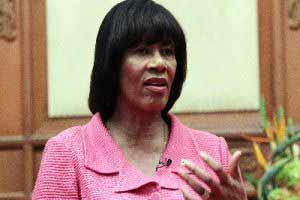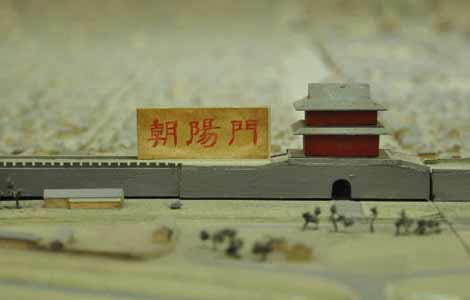Economy heals as companies revive
Updated: 2013-08-22 00:52
By Chen Jia (China Daily)
|
|||||||||||
The economy appears to have staged a modest rebound last month that will continue through the second half, driven by better corporate conditions along the eastern coast, a top-level government economist said.
GDP growth in the second half may accelerate, but not by much, with the figure expected to be near 7.5 percent, Fan Jianping, chief economist at the State Information Center under the National Development and Reform Commission, told a news conference on Wednesday. The center is a government think tank.
 |
|
A road under construction in Bozhou, Anhui province. The central government will increase investment in such projects to improve living standards and upgrade cities' infrastructure. Railway construction will also be accelerated in the second half.ZHANG YANLIN / FOR CHINA DAILY |
Operating conditions have improved lately for companies in eastern regions of the country, Fan said. That was partly reflected in the rate of industrial output growth in July — 9.7 percent, the fastest speed in five months.
He described the situation as "complex but stable overall" in the first seven months.
"China will not experience an economic crisis as long as growth remains above 7 percent," Fan stressed.
"Because the potential economic growth rate is estimated at about 8 percent, chasing double-digit growth now is incompatible with the real situation."
Growth of the world's second-largest economy has run between 7.4 and 7.9 percent for five quarters now, and that will be the "new normal" for the long term, Fan said.
He said the weak global recovery, together with the domestic economic structural adjustment, will mean pressure in the near term.
During that time, the government is determined to focus on revitalizing companies, instead of stimulating fixed-asset investment.
The State Council, the cabinet, announced several steps after first-half and second-quarter economic indicators were released. Chief among those indicators was GDP growth, which slid to 7.5 percent in the second quarter from 7.7 percent in the first.
The measures included suspending taxes for small businesses, boosting information consumption and promoting railway investment in the second half.
"That is not a new stimulus package," said Fan. He said it was "quite different" from the aggressive, 4 trillion yuan ($653 billion) investment plan that followed the global financial crisis in 2008.
All the measures announced so far are in line with the 12th Five-Year Plan (2011-15), according to Fan.
"We can expect more on economic reforms in the second half, especially that the government will additionally remove administrative approval requirements for enterprises."
Wang Tao, chief economist in China with UBS AG, said that the pickup in July may reflect to some extent the delayed impact of strong credit growth earlier in the year.
"It has also been helped by improved confidence after the government's announcement that it would support growth with some fine-tuning measures," she said.
"But the recovery will depend on the strength of external and domestic demand, as well as future policies, and it is going to be modest."
As to the external environment, headwinds will come from moderate recoveries in the United States and Europe, as well as uncertainties in emerging market growth, especially when developed countries such as the US phase out quantitative easing.
On the domestic front, China is still one of the places in the world with a fast-growing consumption growth rate, and that will be a key driver of the economy. Investment in projects to improve living standards, such as low-income housing, will not be scaled back, even though the central government's fiscal income growth has slowed, Fan said.
Stephen Green, chief economist in China at the Standard Chartered Bank, said that he expected no change in the central bank's one-year benchmark interest rate before the end of 2014.
More reforms are expected to liberalize interest rates, because the current benign inflation environment offers good opportunities, Green said.
In the first seven months, the average consumer price index was 2.46 percent, much lower than the year's target of 3.5 percent.
Today's Top News
Sino-Japanese meeting at G20 ruled out
Japan coast guard seeks more money
Party's plenum to focus on reform
Industrial sector's profit picture brightens
Rich Chinese eye overseas properties
New time limits for visa processing
China joins global effort to combat tax evasion
Chinese negotiator in DPRK
Hot Topics
Lunar probe , China growth forecasts, Emission rules get tougher, China seen through 'colored lens', International board,
Editor's Picks

|

|

|

|

|

|





